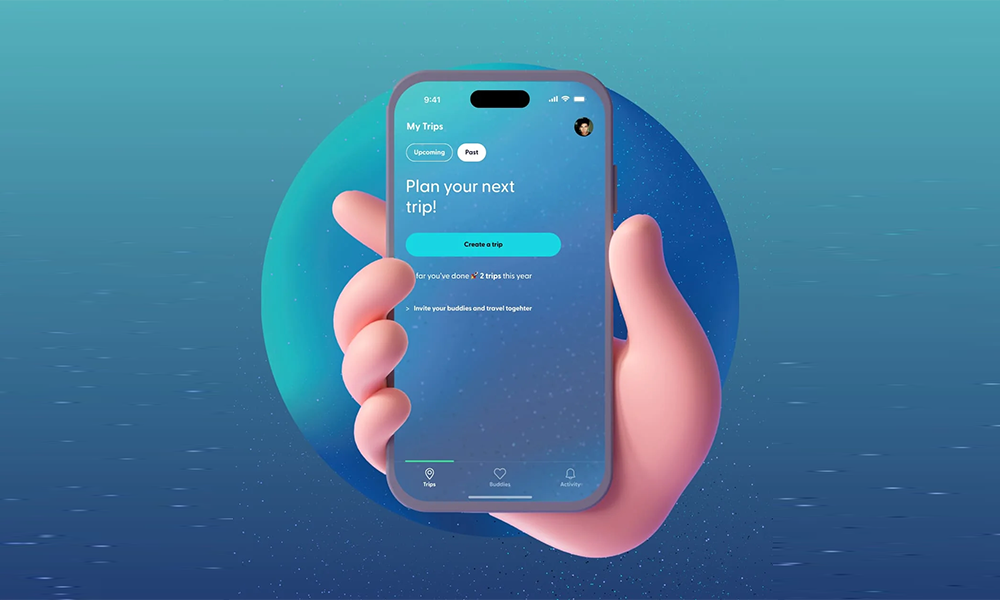
Considering an in-app revenue exceeding $100,000 in the first 12 months, GoPractice research indicates that only 0.95% of all the apps published since 2016 reached the milestone. This means only about 1 out of 100 apps built failed to make it big.
So, why is that? More importantly, what can you do differently to ensure your app reaches the top of the food chain? We are here to clear the air and help you make it happen.
What Makes An App Successful?
In simple words, a successful app meets the needs and demands of users as well as the business. However, that may seem like a piece of cake on paper, but it is quite tricky and hard to do.
If you are designing an app to generate a lot of money, it may not be successful. Also, if you only design it for the people, it may not have a solid ROI plan and may suffer financial loss. Therefore, the best way is to strike the perfect balance of meeting consumers’ needs as well as business needs. Here is a list of features for both.
-
User-Centric Qualities
- A balance between design and features to make the app visually appealing while fulfilling the needs and demands of users.
- Seamless functionality to ensure high speed and smooth navigation.
- Self-explanatory UI and UX to ensure ease of use without any instructions or support.
- Robust security, stability, and reliability make the app dependable.
- Swift and satisfactory customer support ensures that consumers have the necessary help whenever needed.
-
Business-Centric Qualities
- Easy and viable updates to ensure flaws and bugs remain outside.
- Robust protection to ensure the users’ privacy and information are safe.
- Cost-effective maintenance to support future upgrades, maintenance, and a good ROI.
12 Tips To Create A Successful Mobile App
If you are on your way to creating a new app for your business that satisfies consumers’ needs as well as business demands, these 15 tips will surely come in handy.
1. Target Audience Research
The first thing that should be your focus is the target audience research because after all, they are the ones who are going to use the app.
This will help you identify the potential of your app against the market needs. So, let’s come over to how you can do it:
- Search for relevant statistics, facts, and figures
- Check what’s trending
- Cover both qualitative and quantitative aspects
The best way is to study everything and research every source of information, including social media, forums, search engines, etc. Collect all the necessary information, like age, sex, location, etc, and organize it based on your needs.
Finally, narrow down the list to your specific target audience. The bigger the audience group, the better for you as the chances of success will be higher.
2. Competitors Research
Now that the audience research is out of the way, the next part is the competitor’s research. This helps you figure out who else is working in the same category and niche as you are and how many apps there are the same as yours.
Although it is better to have as little competition as possible, there is nothing to worry about. Thoroughly look at the apps that are similar to your niche and understand their functionality, interface, reviews, and everything else. Make sure your strategy and overall app is unique and good enough to steam the spotlight from your competition. Also, properly use App Store Optimization, keywords, and everything else that attracts attention.
3. Targeted Operating System
Next up is the choice of operating system you want your app to launch on. The two primary ones are Android and iOS. You can choose your app to be Native to a single platform or a Cross-Platform to target both markets. Your choice will decide the amount of work you have to put in to make it functional, engaging, and efficient for the operating system(s).
- For Android App Development: Kotlin and Java with Android Studio are the go-to for most.
- For iOS App Development: Swift or Objective-C with Xcode is the only option.
- For Cross-Platform App Development: React Native or Flutter are most common.
4. Brainstorm App Idea
Before jumping into actionable situations, take your time to incubate the million-dollar idea with your team. Also, you need to clarify whether your app is a solution, store, or something else and how it will help the audience or a business if it is a digital business product.
Thinking hard and deep on this stage will help you put together a successful road map for your app. Lastly, finalize the highest priority things that you surely want your app to have and make sure everyone on your team is on the same page.
5. Plan The Mobile App Design
The overall design of your app can make or break your app’s potential for success. It must be friendly, engaging, and easier to use – the more the better, as it will attract the audience to download the app.
You can use wireframing or mockup tools like Figma to create the overall mobile app design. Follow the best practices, tips, and tricks to get the best outcome possible. Another thing you should take into notice is the different screen sizes and device types. It will help plan and develop features like push notifications, integrations, and other aspects.
6. List Out Integrations and Features
After defining the app design, you can focus on creating the list of features and integrations you want to include in your app. Consider both the functionality and the overall aspects of each feature.
In order to make your app unique, include potential features that set your app apart, on top of the basic ones. This could be multiple payment gateways, cross-platform functionality, search options, or anything unique and valuable that makes your app unique. Other than that, your app should have push notifications and social media integrations.
Although there are many different features and integrations out there, it would be best to include only the most relevant ones while considering your budget.
7. Integrate Genuine Value
An app delivers necessary and essential value when it solves a problem. Even the simplest of apps have some kind of problem-solving thing that encourages consumers to download the app.
In short, the application should provide an important benefit to users that motivates them to keep coming back. Unique value propositions may be anything like market-competitive pricing, plethora of information, speed of file transfers, or else. The most successful apps combine the consumers’ needs, business objectives, and technological solutions.
8. Choose The Right Technologies
The choice of technologies will affect the performance and functionality of the app. You must choose the right and relevant ones to ensure seamless flow.
Native Apps: These are OS-specific apps for either Android or iOS. They use different programming languages and leverage the device’s hardware to the best extent. For example: Kotlin for Android and Swift for iOS.
Cross-Platform Apps: These apps can be deployed on both Android and iOS as they have a shared codebase. This utilizes cross-platform Software Development Kits (SDKs), such as Flutter and React Native.
9. Choose The Best Development Team
Believe it or not, the choice of development team also determines an app’s potential for success. For this part, you have three different options:
Hire Freelancers: You can contact individual developers from platforms like Fiverr and Upwork, but it is the least efficient method. It is best for small projects with little to no post-launch maintenance.
Build An In-House Team: The next option is to build a team of your own, but it is going to cost a lot of money and time. You will have to go through the hiring process and build a proper setup for them to create the app.
Contact A Development Agency: The last, most efficient, and best way to build an app is to collaborate with a reliable and trusted app development company.
10. Ensure Robust Security
Mobile app security is one of the most crucial aspects. You should plan it from the beginning and keep on monitoring it forever. For this, you must do the following:
Follow essential secure coding practices: Like input validation, data encryption, and secure communication protocols.
Use secure authorization features: These include things like strong password policies, two-factor authentication, etc.
Encrypt sensitive information: This means hiding user passwords, financial data, and other sensitive information.
Integrate secure data storage: This will help ensure no data is leaked and protect it if any breach occurs.
Monitor and conduct security checks: Do security checks like security testing, penetration testing, and vulnerability assessments to ensure the security is at its best.
11. Prepare Marketing Strategies
When your app is almost finalized, it is time to build a powerful marketing strategy that compliments your business model. Make sure to target different markets with different strategies to cover the diverse type of audience found on each platform.
Plan your marketing campaigns with your peers, including pre-launch, launch, and post-launch campaigns. This includes content marketing, social media, paid search, PR outreach, influencer, and other marketing tactics.
Next, launch and promote your app on different channels and marketing platforms. After that, collect relevant metrics using different analytical tools for performance and marketing success.
12. Update and Make It Better
Once your app is live in app stores, the real work starts. Mobile apps require routine maintenance with overtime updates to perform best and stay relevant.
You need to focus on fixing bugs and technical issues, integrating new features, and updating your app. You can collect feedback from the market and upgrade your app according to the audience’s needs and demands. Make sure to stay updated with the latest trends in the market.
Final Takeaway
Building a successful mobile app requires a set of unique but valuable features and careful planning, as well as proper marketing techniques and execution. From finding the right target audience to adding business value to choosing the right mobile app development team and platforms, there are many steps to take. However, if you are careful with each and proceed with proper planning, your app can be the one users click on.
By following the best practices we mentioned above and staying up-to-date with the latest trends, you can create a success-worthy mobile app, for sure.

